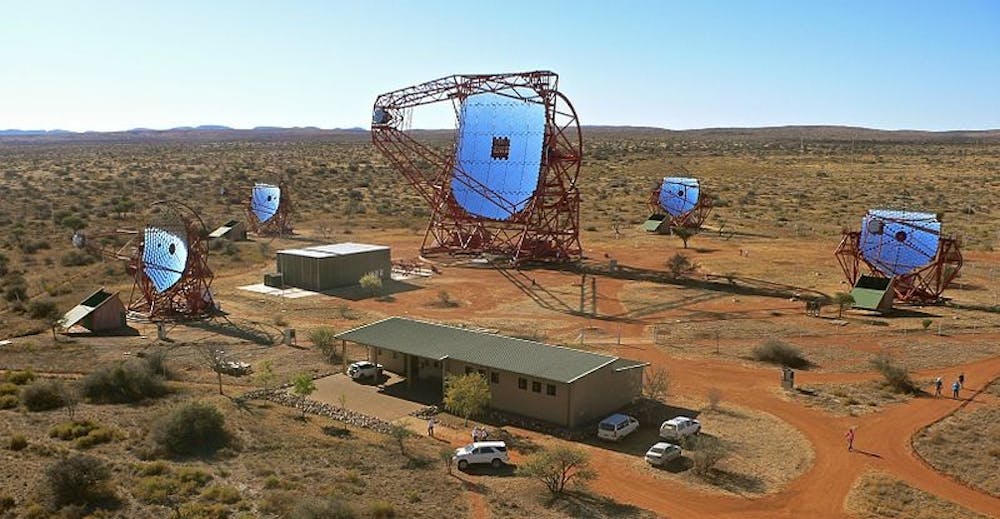A recent article published in Astronomy & Astrophysics found the farthest very high energy gamma source detected to date. About seven billion years ago, an explosion occurred at a black hole in the center of a galaxy.
QSO B0218+357 is an extremely distant blazar, a very compact region surrounding a supermassive black hole, with a very high energy range. After the explosion, high bursts of gamma rays are fired. These gamma rays were captured by several telescopes including the Major Atmospheric Gamma Imaging Cherenkov (MAGIC) and the Large Area Telescope (LAT).
On July 14, 2014, QSO B0218+357 was initially discovered by the LAT and other gamma ray telescopes immediately fixated at the blazar. MAGIC, an Earth-grounded telescope that was upgraded in 2012 and that specializes in detecting high energy gamma rays, provided the data that ultimately allowed researchers to describe the properties of the far-away blazar. The gamma ray emissions from QSO B0218+357 lasted for two nights.
According to the press release, the MAGIC was unable to observe QSO B0218+357 because it could not operate during a full moon. However, 11 days later, MAGIC had another chance to observe QSO B0218+357 under more optimal conditions.
How did the MAGIC manage to get another chance to provide such important data about the blazar?
MAGIC did not observe the direct gamma rays of QSO B0218+357. What it did observe was a gravitational lensed deflection of the rays. Gravitational lensing is a phenomenon in which a distribution of matter such as a galaxy can bend light as it travels from the source to the observer.
This can be explained by Einstein’s General Theory of Relativity, which predicts the manipulation of light by large masses. The gravitational lensing split the gamma rays into two nearly indistinguishable parts with a delay of 11 days.
“This was the first time we were able to observe that high-energy photons were deflected by a gravitational lens,” Julian Sitarek, an astrophysicist from the University of Lodz in Poland, said in a press release.
The light from distant galaxies has distinct spectral characteristics from their surrounding gas atoms. Typically, these spectra are shifted toward the red end of the spectrum. This shift, called redshift, explains that galaxies are moving away from Earth.
A redshift essentially measures the speed that the galaxy is moving, which is proportional to its distance from Earth. QSO B0218+357 was located at a redshift of 0.944, which represents the greatest distance researchers were able to analyze ultra-high gamma energy.
Due to its large redshift value, researchers considered extragalactic background light, or accumulated radiation in the universe from star formation. The observation of very high energy gamma rays is severely affected by the presence of the level of extragalactic background light. The researchers found that the MAGIC and LAT observations can be used to explain these constraints.
The researchers used data obtained from the MAGIC telescopes and LAT observations to create a multiwavelength spectral energy distribution of QSO B0218+357 that can be used to model its source. The ultra-high gamma rays detected by MAGIC were in the expected direction and time of arrival. The observed emission ranged from 65 to 175 GeV. Moreover, the results from these observations supported several existing extragalactic theories and light models such as Einstein’s General Theory of Relativity and extragalactic background light models.
The implication from this successful observation of very high energy gamma rays from a redshift of almost one extends the boundaries of observational astronomy.
“With the MAGIC observation, the part of the universe that we can observe via gamma rays has doubled,” Razmik Mirzoyan, a scientist at the Max Planck Institute for Physics, said, according to a press release.





